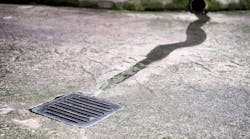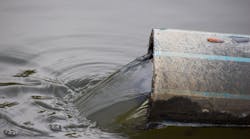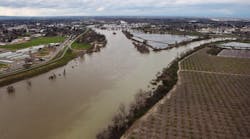• Feds turn focus to pollution north of Lake Okeechobee
WEST PALM BEACH, FL, March 5, 2010 -- The Everglades Agricultural Area (EAA) receives praise for its proven success in cleaning water south of Lake Okeechobee by two top state environmental agencies in their annual restoration report.
The 2010 South Florida Environmental Report, published by the Florida Department of Environmental Protection and the South Florida Water Management District, reveals the EAA achieved a 68 percent reduction in phosphorus loads in 2009 and an overall 54 percent long-term reduction in phosphorus loading during its 14th straight year of meeting water quality goals. The target for reductions is 25 percent.
The farming area's Best Management Practices (BMP) coupled with the 45,000 acres of Stormwater Treatment Areas (STA), which are constructed on former farmland, have prevented more than 3,200 metric tons of phosphorus from entering the Everglades Protection Area (EPA). Farmers south of Lake Okeechobee have contributed nearly $200 million in special agricultural property taxes to build the STAs.
The success is even more impressive due to the circumstances that occurred in Water Year 2009. According to the Environmental Report, while the average phosphorus concentration decreased from 9.5 to 8.1 parts per billion in Everglades National Park, the phosphorus load into the EPA was 77 percent higher than the previous year, due to Tropical Storm Fay and other subsequent rains that occurred during severe drought. Despite rising phosphorus loads, the report credits the farming area, stating: "the reduced (phosphorus) inflow concentrations demonstrate the efficacy of BMP and STA nutrient removal."
While the EAA south of Lake Okeechobee is regulated and must meet mandatory standards, the northern Lake Okeechobee watershed is not and revealed a much different story.
According to the report, the average annual total phosphorus load to Lake Okeechobee from 2005 to 2009 was 572 metric tons, which is four times greater than the established standard for phosphorus entering the lake.
"Sugar farmers in the agricultural region south of the lake have worked tirelessly and have invested millions of dollars in BMPs to achieve 14 straight years of more than doubling the target performance for water quality goals," said Gaston Cantens, vice president of Florida Crystals. "We are proud of what we have accomplished. Nevertheless, at some point, we need help. Each year, water flowing into Lake Okeechobee is increasingly phosphorus rich, and farmers to the south are burdened with the sole responsibility of cleaning the water and meeting stringent water quality standards, with little help from the rest of the state."
Florida Crystals applauds the Nature Conservancy and the federal government for their newly announced efforts to create water storage and treatment features north of the lake that could help filter phosphorus-laden water from central Florida before it reaches the lake.
"It is critical that we quickly begin reducing phosphorus loads to Lake Okeechobee from the northern basins," said Sam Poole, former executive director of the South Florida Water Management District. "The increasing concentration of phosphorus seriously threatens the health of the lake and is beginning to impact the effectiveness of the Stormwater Treatment Areas in preventing damaging levels of phosphorus from reaching the Everglades Protection Area."
In view of these efforts for the Northern Everglades, as well as next week's consideration of the U.S. Sugar contract extension, Florida Crystals is hopeful the South Florida Water Management District and the governor's office will come to the same conclusion: Our valuable resources are better spent cleaning water north of the lake, instead of wasting taxpayer dollars acquiring more land to the south, which will not address the growing problem.
###


